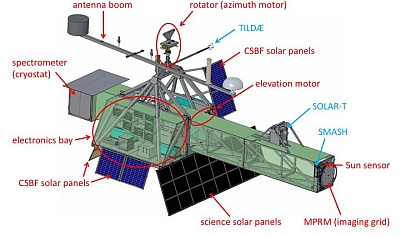Purpose of the flight and payload description
Details of the balloon flight
Balloon launched on: 11/18/1987 at 10:45 utc
Launch site: Australian Balloon Launching Station, Alice Springs, Australia
Balloon launched by: National Scientific Balloon Facility (NSBF)
Balloon manufacturer/size/composition: Zero Pressure Balloon AF-392.73-080-NSCR
Balloon serial number: W23.50-3-03
Flight identification number: 236N
End of flight (L for landing time, W for last contact, otherwise termination time): 11/18/1987 at 21:24 utc
Balloon flight duration (F: time at float only, otherwise total flight time in d:days / h:hours or m:minutes - ): 11 h 30 m
Landing site: 400 miles W of Alice Springs, Australia
External references
- An imaging observation of SN 1987A at gamma-ray energies Astrophysical Journal, Part 2 - Letters, vol. 334, Nov. 15, 1988, p. L87
- Gamma-ray imaging observations of Supernova 1987A Ph.D. Thesis, Palmer, David M. California Institute of Technology, 1992
- Goddard Launches Experirments to study exploding star Goddard News Vol. 33 Nº 12, December 1987, Pag. 4
- GRIP website Space Radiation Laboratory - California Institute of Technology
- Recent results in the NASA research balloon program 27th Aerospace Sciences Meeting, 1989
- Scientific ballooning in Australia Indian J. Radio Space Phys., Vol. 20, No. 3/4, p. 193
6083If you consider this website interesting or useful, you can help me to keep it up and running with a small donation to cover the operational costs. Just the equivalent of the price of a cup of coffee helps a lot.


